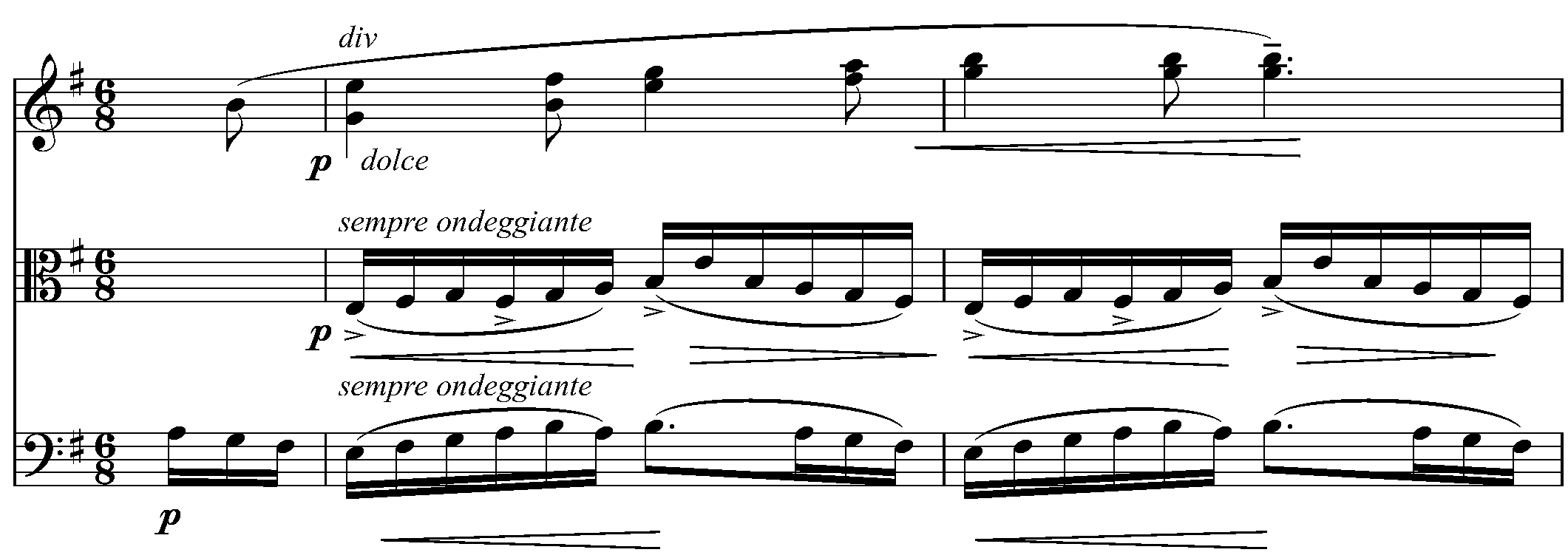Exercise 1 - Themes juxtaposing, superimposing and developing
In a toolkit such as this project which concentrates mainly on harmony, it’s easy to disregard contrapuntal writing and textural aspects.
- In the work heard by clicking the following link, the composer Smetana depicts different aspects of his country in a series of 6 symphonic poems:
- The work was written with an element of political propaganda in mind. The Prussians were a constant threat to Bohemia’s independence as a nation at that time.
- This work, Vltava, describes the river of the same name springing high in the country’s mountains and its journey before flowing into Prague at the end and joining the river Labe (Elbe).
- The work was composed in 1874.
Bedrich Smetana (1824-1884), was one of the national figures of his country, Bohemia; always passionate about flying the flag for national independence from those whom he thought were oppressing his country and its traditions.
In this work, two small streams join to become a river. It flows through meadows, through the night, beside large castles, palaces and more before reaching Prague, the capital city.
- This is how Smetana superimposes and juxtaposes the theme of the two small streams at the beginning of the work:
- The two rivulets join each other and the texture becomes more homophonic:

What happens in the accompaniment now? Which instruments play the accompaniment?
- When we finally hear the main theme, the rivulets’ theme is still heard. Which instruments play it now?

- 02:53: What has happened to the main theme now?
- 03:15: How does Smetana depict the hunt in the forest whilst keeping the previous theme?
- 04:17: A wedding in the countryside: Is there any connection between the previous themes now? Think outside the box. Think of intervals.
- 05:48: At the end of the wedding music, how does the composer modulate to A♭ major for the following section?
- 06:10: In the section ‘In the Moonlight’ – ‘Dance of the Nymphs’, how does the composer create unity through reintroducing a theme heard before together with the silvery sound. Which special effects and instruments are heard?
- 07:50: At the end of the section, how does the composer modulate from A♭ minor to B dominant 7th through an enharmonic change? Think again. In the key of E minor, which chord is B dominant 7th and what is its relation to the tonic, E minor?
- 09:04: St John’s Rapids: Describe what has been developed in the themes heard previously? Which instruments introduce the main theme now? Which chords are used to describe the wild rapids and torrents? At the end of the section, which words are used to describe the continuous notes B heard in the bass range?
- 10:03: Flowing into Prague. How does the composer describe the small river that has grown substantially by now? Think of textures and keys.

What do we hear as accompaniment? Listen again carefully.
Keep on listening: